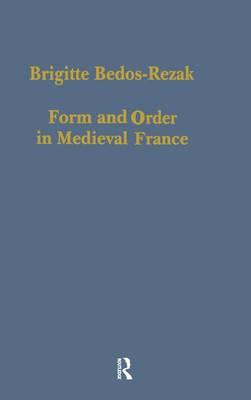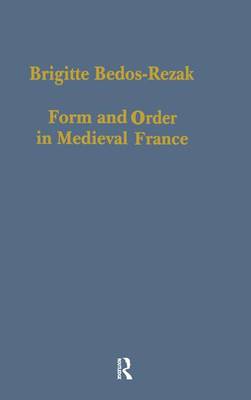
- Afhalen na 1 uur in een winkel met voorraad
- Gratis thuislevering in België vanaf € 30
- Ruim aanbod met 7 miljoen producten
- Afhalen na 1 uur in een winkel met voorraad
- Gratis thuislevering in België vanaf € 30
- Ruim aanbod met 7 miljoen producten
Zoeken
Form and Order in Medieval France
Studies in Social and Quantitative Sigillography
Brigitte Bedos-Rezak
€ 366,45
+ 732 punten
Omschrijving
By the early 13th century the use of seals in Northern Europe was a generalized phenomenon which involved society as a whole, crossing boundaries of gender, age, religion, and social and professional status. The function traditionally ascribed to seals is the validation of the documents to which they were affixed, but the phenomenon has far wider implications, as is brought out in this collection of studies by Brigitte Bedos-Rezak. In itself a seal could serve as a quasi-amuletic object or a personal adornment, the image impressed from it functioned as a sign conveying identity and power, and the ritual of sealing provided an occasion for the affirmation of status. In her work the author has aimed to use the approaches of statistics, cultural and women's history and semiotics, as well as the 'traditional' skills of art history, law and diplomatics, to show the numerous surviving seals can be used to reach into the history of the Middle Ages, and at the same time to explore and test the interpretative models suggested by semiotics and postmodern theories on symbols, representation and meaning.
Specificaties
Betrokkenen
- Auteur(s):
- Uitgeverij:
Inhoud
- Aantal bladzijden:
- 328
- Taal:
- Engels
- Reeks:
Eigenschappen
- Productcode (EAN):
- 9780860783558
- Verschijningsdatum:
- 23/12/1993
- Uitvoering:
- Hardcover
- Formaat:
- Genaaid
- Afmetingen:
- 156 mm x 234 mm
- Gewicht:
- 635 g

Alleen bij Standaard Boekhandel
+ 732 punten op je klantenkaart van Standaard Boekhandel
Beoordelingen
We publiceren alleen reviews die voldoen aan de voorwaarden voor reviews. Bekijk onze voorwaarden voor reviews.








